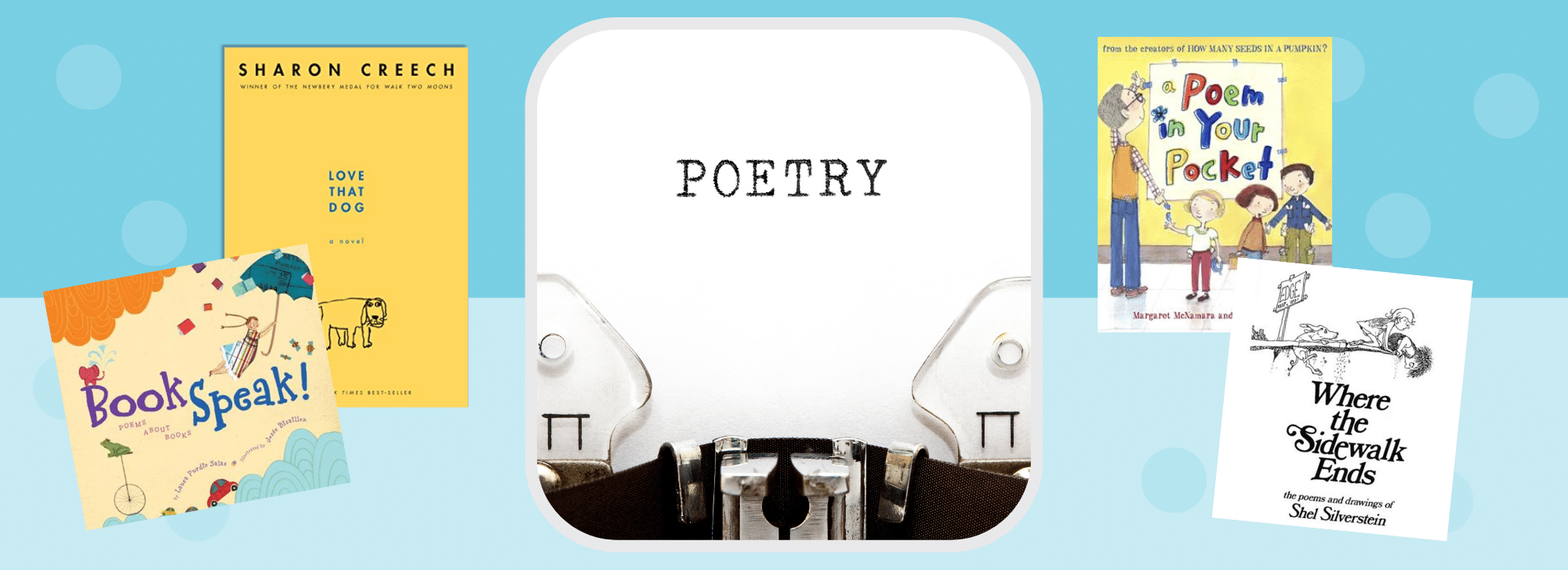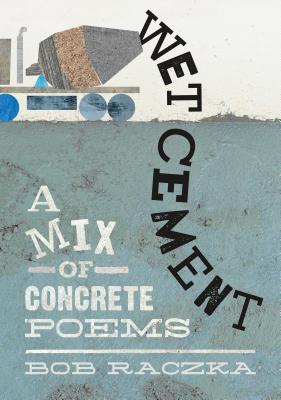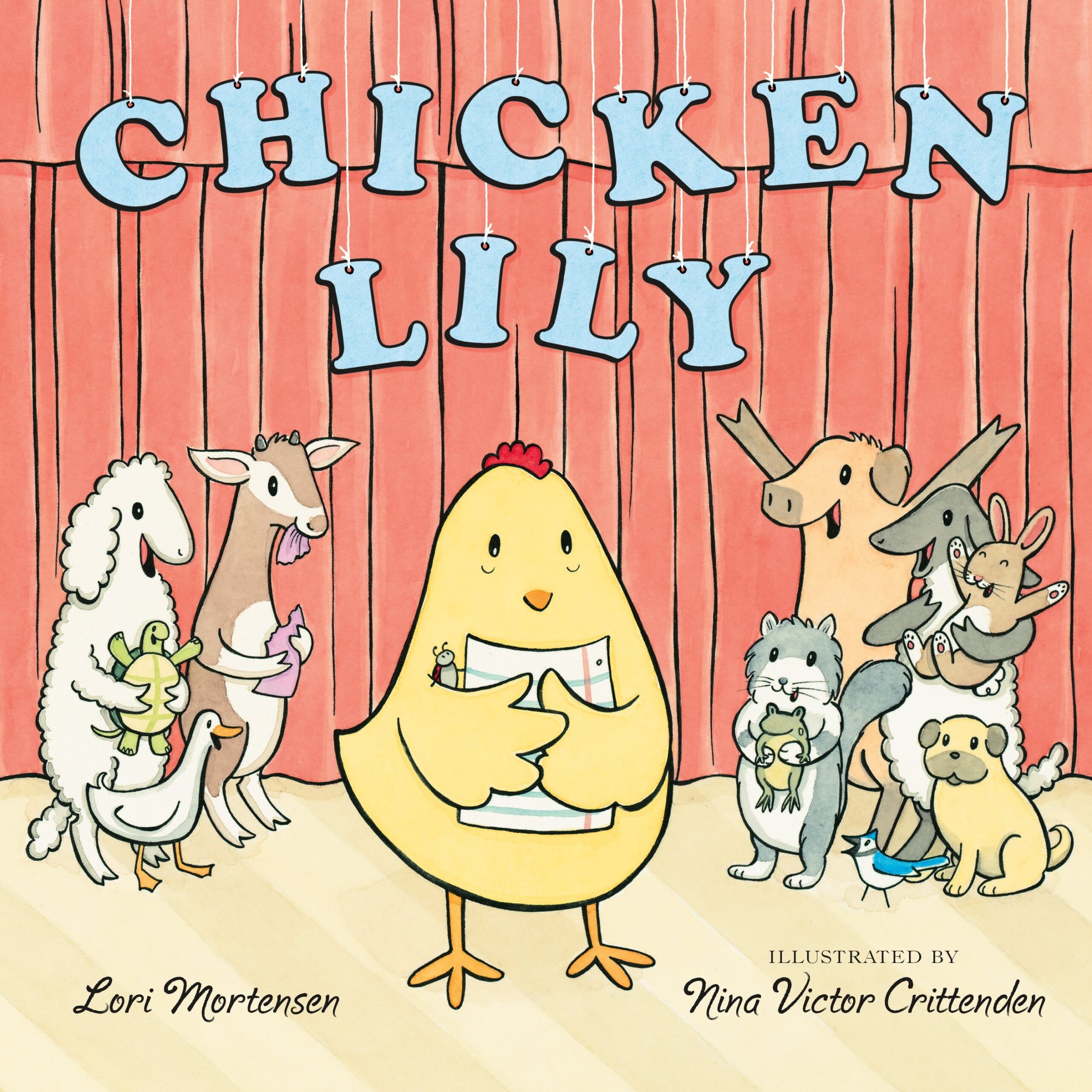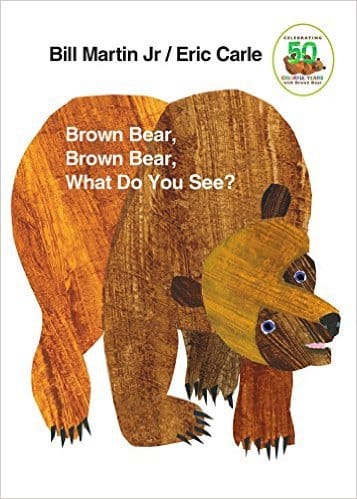Poetry Books to Add to Your Classroom
It’s April. What’s in your pocket? Is it empty? Well, why not put your favorite poem in there and read it throughout the day. Poem in Your Pocket Day takes place during the third week of April; an event that celebrates the joy of sharing poetry.

What poem will keep you company this April? You might find a gem in one of these books!
Visually Pleasing Poetry
Wet Cement: A Mix of Concrete Poems by Bob Raczka
Hand the artists in your class a copy of this collection of creatively designed concrete poems. They will enjoy the clever ways the poems are constructed to visually engage the reader. Invite them to manipulate the text of a favorite poem and work with different art mediums to illustrate the text.
A Child of Books by Oliver Jeffers and Sam Winston
Take a journey through typographical landscapes and intriguing illustrations as you treasure this prose poem. A Child of Books deserves a place on your lap with children huddled close by to appreciate the beautiful architecture of the story.
Learn more about this remarkable book by watching these videos:
A Child of Books Book Trailer by Candlewick Press
Oliver Jeffers and Sam Winston Discuss a Child of Books by Candlewick Press
Counting Lions by Katie Cotton
The animal lovers in your class will want to put this entire book in their pocket. With lifelike charcoal drawings and captivating poetry, the author and illustrator did a tremendous job of telling the story of endangered animals.
The poems provide opportunities to discuss the author’s purpose for writing the book. Print the Identifying the Author’s Purpose Task Cards to guide students as they read the poems.
Haiku Poetry
Guess Who, Haiku by Deanna Caswell and Bob Shea
Practice visualizing with this poetry book full of riddles. Each poem describes the sights, sounds, and actions of different animals. Turn the pages to reveal a picture of the animal. As you read the poems, ask children to share their mental images before revealing the illustration.
Ask why it is important for readers to have a mental picture while they read. Refer to the Visualizing Task Cards from BookPagez when looking closely at poetry.
GUYKU: A Year of Haiku for Boys by Bob Raczka and Peter H. Reynolds
This is a fun book to introduce to the entire class. Boys will be so excited to have a poetry book written just for them, and girls will be inspired to write their own “GALKU” poetry.
In either case, children will want to learn the structure of a haiku poem so they can write one on their own.
Rhyming Poetry
Where the Sidewalk Ends by Shel Silverstein
Published in 1974, this book of poetry still ranks high on favorite poetry lists. Children will giggle as they read poems about silly circumstances and gross ideas. Borrow extra copies from the school library as this book will be in high demand.
Use the lesson plans and teaching resources for Where the Sidewalk Ends to spend time enjoying literature with students.
UnBEElievables: Honeybee Poems and Paintings by Douglas Florian
Before reading this poetry book, ask children to share questions they have about bees. By the time they reach the last page, their questions will most likely be answered. Each page includes a poem, an illustration, and an informative paragraph about flying insects.
Children can share their new learning using the Research and Write template from BookPagez.
Freedom in Congo Square by Carole Boston Weatherford
This award-winning book takes place in New Orleans when slaves worked the farms. For six days, they toiled under miserable conditions, hoping to make it to Sunday, a day of freedom. On this day of rest, they reunited and danced with family and friends in Congo Square.
Ask a group of seven children to read the story, and dedicate one day of the week for each student. Discuss why the author might have used this text structure to write about this time in American history.
Use the Research and Write template from BookPagez to guide children as they learn more about Congo Square.
Bookspeak! Poems About Books by Laura Purdie Salas
The poetry in this collection presents a different way of looking at books and the stories they tell.
Read the poem “Index” when introducing parts of a book. Children will smile when Index tries to convince the reader why he is the most important part of a book. Model how to use an index after reading the poem.
As a guided practice activity, give each student a nonfiction book with an index. Ask children to find the words in the book that are listed in the index. Make a game out of it, and have some fun!
Novels in Verse
Love That Dog by Sharon Creech
Many readers will instantly connect with the boy in this story who proclaims he does not like poetry. The boy gradually develops his appreciation for poetry as he journals his thoughts and feelings about the genre.
The journaling exercises give him a venue to express his feelings about missing his dog. Take time to further explore this memorable book with lesson plans and teaching resources for use with Love That Dog.
Brown Girl Dreaming by Jacqueline Woodson
Explore the art of verse poetry while learning about Jacqueline Woodson’s life as a young girl. This poetic memoir delivers stories of discrimination, fear, family, and finding your place in the world.
Readers will want time to absorb the outstanding phrases and descriptions Woodson crafted in this award-winning book. The book club resource set for use with Brown Girl Dreaming offers carefully crafted lesson plans to support the higher level reflection this book deserves.
Daniel Finds a Poem by Micha Archer
What is poetry? Poet Samuel Taylor Coleridge described poetry as placing the “best words in the best order”. Daniel finds this to be the case as he asks his woodland friends to define poetry. The creatures explain by using meaningful, descriptive words. Daniel collects their poetic phrases and creates his own poem for a Poetry in the Park event.
Explore the sequential text structure in this story using the “Understanding Text Structure Task Cards” from BookPagez.
A Poem in Your Pocket by Margaret McNamara
Writing poetry takes time, especially if you want it to be perfect. In this story, Elinor wants to write the perfect poem for a poet who is presenting at her school. The goal for perfection stalls Elinor's writing. Read how the visiting poet helps Elinor share an impromptu poem that required no practice. Examples of different forms of poetry are included in the book.
Visit the Poem in Your Pocket Day webpage for fun ideas and activities to share with your class.
Chicken Lily by Lori Mortensen
For the children in your class who are nervous about reading aloud, the story of Chicken Lily might help them overcome their fears. Students will have fun pointing out the puns in this story about a chicken who is afraid to read her poem to the class.
Share this story along with the lesson plans and teaching resources for use with First Day Jitters to practice making text-to-self and text-to-text connections.
Books with Rhyming Words
Madeline by Ludwig Bemelmans
Brown Bear, Brown Bear, What Do You See? by Bill Martin Jr.
So many children begin reading with this predictable, rhyming book. The illustrations support readers as they proudly interpret each page.
Practice retelling and summarizing with the resource set for use with Brown Bear, Brown Bear, What Do You See? by BookPagez.
Room on the Broom by Julia Donaldson
For more practice with retelling and summarizing, read Room on the Broom with children. This is a fun story about a witch who keeps losing things as she flies through the night. Her friends climb on the crowded broom to help her find the lost items.



















